Table of Contents
ToggleThe Best of Granada Spain in 3 Days.
Granada is a city in southern Spain, in the province of Andalusia. It sits under the Sierra Nevada mountains.
The Arabs ruled for over 700 years, and their influence can be seen throughout the city.
In architecture: The Alhambra, the Generalife Palace, and Albaicin neighborhood are examples of the Arab architectural influence of the time.
In Cuisine: Arab influence can also be seen in the cuisine of Granada, which features a blend of Moorish and Spanish flavors.
The Arabs influenced music and dance. Flamenco is believed to have originated from the gypsy community that lived in the Albaicin neighborhood. It features elements of Moorish music and hand clapping.
Their influence in Granada has left a strong mark on the city’s cultural heritage, making it special blend of Islamic and Spanish traditions.
Granada is a vibrant city with delicious cuisine. It is known for its tapas with a number of restaurants. For restaurants advice click here TripAdvisor.
Best time to visit: September-October and April-May. I have been in April during the Easter holiday. It is a special time in Granada. Religious parades take place throughout the week.
Three days are recommended to enjoy Granada and soak up all that it has to offer. I listed below the itineraries for 1, 2, and 3 leisurely days. Review the 3 days plan for site details and description.
Few things you might need for your trip:
eSim card provides you cell phone service worldwide click Airalo.
For travel insurance check my article “Why I need travel insurance“. Travelex insurance is a good option, click here.
1 Day plan:
The Alhambra
The Palacios Nazaries
The Generalife Palace
The Alcaiceria Bazaar
The Palace of Charles V,
The Granada Cathedral
The Alcaiceria Bazaar
All the sites are within walking distance.
2 Day plan:
La Cartuja Monastery
Albayzín (also known as Albaicín)
The Ermita de San Miguel Alto
Sacromonte
Sacromonte Abbey
All sites are within walking distance.
3 DAYS VISIT
DAY 1
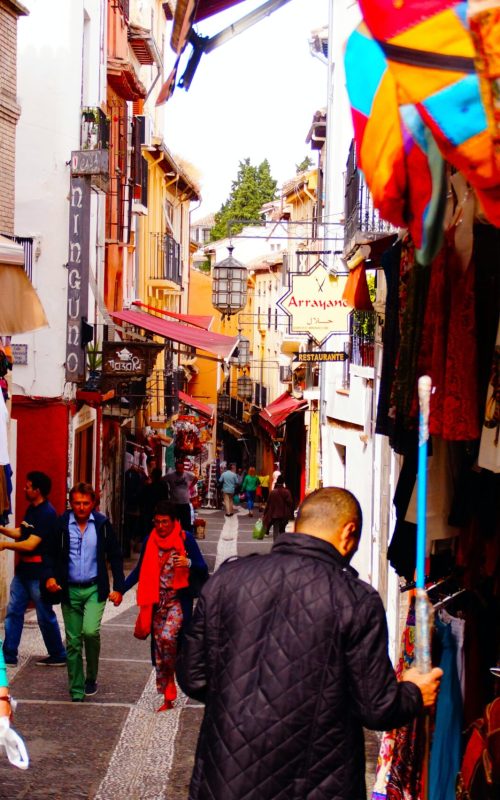
1. The Alcaiceria Bazaar
Is a lively historical market in the center of the old city. Built-in the 15th century as a silk market. Since it has developed into offering a variety of goods and souvenirs. Many vendors are of North African origin immigrants.
Walking through the narrow, winding streets of the Bazaar, surrounded by lively vendors peddling spices, handcrafted leather goods, and ceramic gifts reminds me of a Moroccan bazaar. It is a maze-like layout with detailed Moorish designs.
The bazaar was partially destroyed by fire in the 19th century but rebuilt to its former beauty. It is still one of Granada’s treasures. It is a great place to spend an afternoon and sample the local cuisine include tapas.
|Click here for tours and activities.

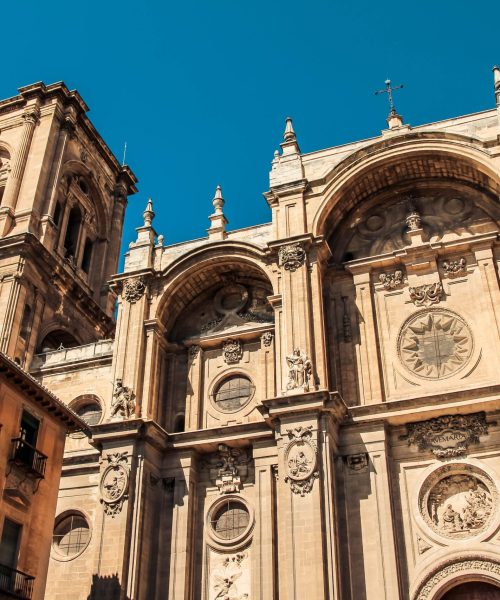
2. The Granada Cathedral
also known as the Cathedral of the Incarnation, is a magnificent Roman Catholic cathedral in Granada. It is considered one of the most important examples of Spanish Renaissance architecture and a prime example of the religious architecture of the Renaissance era.
The church was built in 1523 on a site occupied by a former mosque. It took 180 years to complete the construction.
The exterior is very intricate an ornate and elaborate facade. The bell towers 300 feet over the church.
The interior of the church is just as striking as the exterior. Adorned with works by Spain’s greatest artists.
In the cathedral is the Royal Chapel, which houses the tombs of Ferdinand and Isabella. The main chapel is home to an enormous altarpiece created by Alonso Cano.
It houses a museum housing a collection of religious artwork and artifacts, including tapestries, sculptures, and paintings.
The cathedral stands as a testament to the legacy of Spain’s Catholic monarchs.
Click here for tours and activities.
3. The Alhambra
A palace and fortress complex. Built during the 13th and 14th centuries by the Nasrid dynasty, which was the last Muslim dynasty to rule in Spain before the Reconquista.
The Alhambra is known for its intricate architecture, beautiful gardens, and rich history.
The complex consists of several buildings, including the Nasrid Palaces, the Alcazaba (fortress), and the Generalife (summer palace and gardens).
Click here for tours and activities.
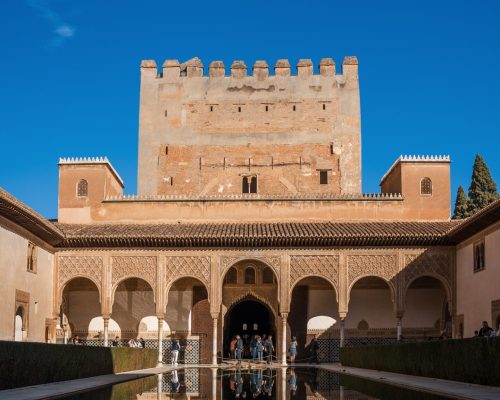
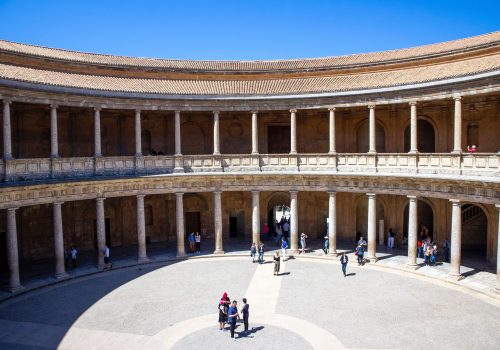
4. The Palace of Charles V
Also known as the Palace of the Emperor, a magnificent Renaissance building in the heart of the Alhambra fortress. Built by the Holy Roman Emperor Charles V in the 16th century as a residence for himself and his wife Empress Isabella of Portugal.
The palace construction began in 1527, designed by the Italian architect Pedro Machuca, who combined Renaissance and Spanish Gothic styles in the building’s design. The Palace of Charles V is an example of Renaissance architecture in Spain.
The palace has a square floor plan with a central courtyard, surrounded by two floors of galleries with arcades. The court yard is a masterpiece of Renaissance architecture, featuring a circular fountain in the center and a series of columns supporting the arches. The upper floor of the galleries is decorated with sculptures, including busts of Roman emperors and other historical figures.
The interior of the Palace of Charles V is divided into two sections, the ground floor, which houses the Museum of Fine Arts, and the upper floor, which contins the Museum of the Alhambra. The Museum of Fine Arts contains a collection of Spanish paintings and sculptures from the 15th to the 20th century, the Museum of the Alhambra houses artifacts and exhibits related to the history of the Alhambra fortress.
The palace was never finished due to a lack of funds. In the 20th century the building was completed and restored.
Click here for tours and activities.
5. The Palacios Nazaries
It was built during the 14th century by the Nasrid dynasty, the last Muslim rulers of the Iberian Peninsula, and is considered one of the finest Islamic architecture in the world.
Several interconnected buildings and courtyards with different unique designs. The Court of The Lions features intricate carvings, stucco, and tile work. The center is adorned by a fountain supported by 12 marble lions.
There are two halls, the Ambassadors and the Two Sisters. Decorated by beautiful honeycomb vaulted ceilings and intricate star-shaped patterns.
The palace complex has lush gardens, courtyards with reflecting pools, and intricate archways and doorways. Visitors can spend hours wandering through the various halls and gardens, enjoying the intricate details and craftsmanship that went into creating this magnificent palace complex.
Click here for tours and activities.
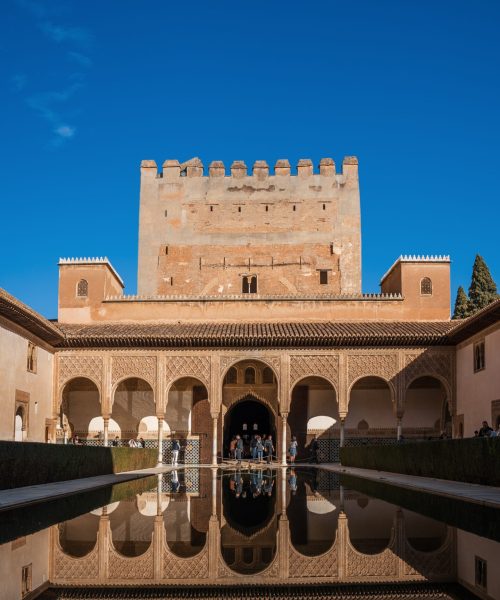
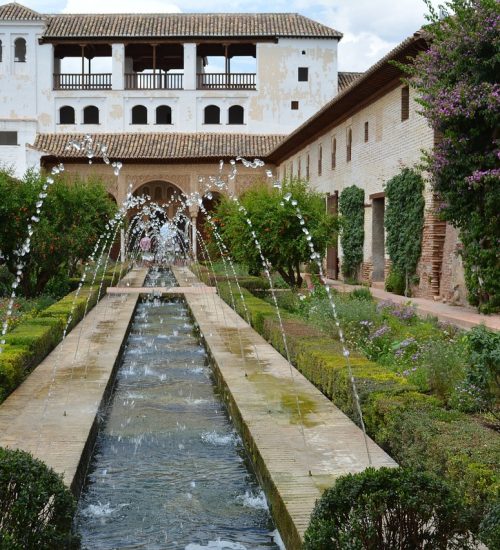
6. The Generalife Palace
A stunning example of Moorish architecture and design. It was constructed in the 13th century by Muhammad II, the Sultan of Granada, as a place of leisure and retreat for the Nasrid dynasty.
The palace is surrounded by lush gardens, fountains, and walkways typical of Islamic architecture. The gardens are arranged in a series of terraces and intricate irrigation system dating back to the 14th century. The water flows through a series of channels and pools, creating a tranquil atmosphere providing relief from the heat of the Andalusian summers.
The Generalife Palace comprised of several buildings, including the Patio de la Acequia, the Patio de la Sultana, and the Jardines Nuevos. The Patio de la Sultana is a smaller courtyard surrounded by columns and arches. It is said to have been the private garden of the sultan’s wife, and it features a beautiful fountain in the center.
The Jardines Nuevos, or New Gardens, were added in the 20th century featuring a blend of traditional Islamic and modern styles. They include a rose garden, a vegetable garden, and a number of fruit trees.The Patio de la Sultana is a smaller courtyard surrounded by columns and arches. It is said to have been the private garden of the sultan’s wife, and it features a beautiful fountain in the center.
The Jardines Nuevos, or New Gardens, were added in the 20th century featuring a blend of traditional Islamic and modern styles. They include a rose garden, a vegetable garden, and a number of fruit trees.
Click here for tours and activities.
DAY 2
1. La Cartuja Monastery
A stunning example of Baroque architecture is located on a hillside overlooking the city. Also known as the Monastery of the Chartreus. Construction began in the 15th century and was completed in the 18th.
The monastery’s interior is richly decorated with intricate frescoes, ornate wooden carvings, and gold leaf accents. The main altar is impressive, with a massive marble sculpture of the Immaculate Conception at its center. The monastery also contains a variety of chapels, each with its unique style and decoration.
It houses a collection of religious art and artifacts, including paintings, sculptures, and vestments. The Sacristy is also home to a stunning altarpiece, which features scenes from the life of St. Bruno, the founder of the Carthusian order.
The monastery is surrounded by beautiful gardens and courtyards. The gardens reflect the Andalusian classic style. The gardens and the courtyards are impressive with their archways and floor tiles.
The monastery is a well-kept secret that affords the visitors an escape from the crowds enjoying the tranquility.
Click here for tours, activities, and reservations.
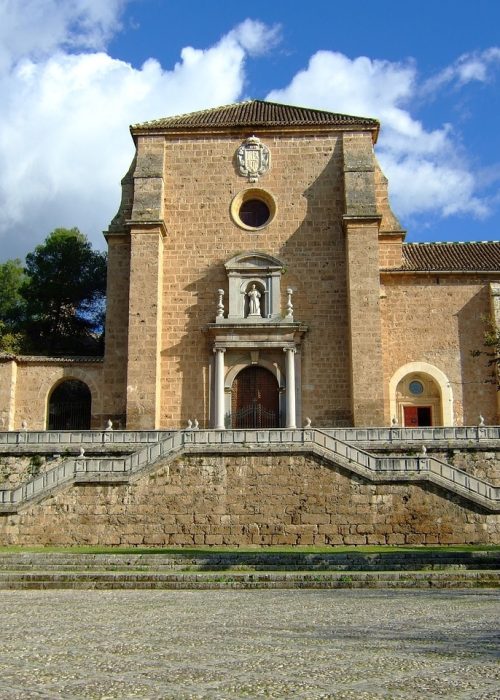

2. Albayzín (also known as Albaicín)
A historic neighborhood. The quarter is situated on a hill facing the Alhambra is the most picturesque area in Granada, with narrow streets, white-washed houses, and beautiful views of the surrounding mountains and the Alhambra.
The Albayzín quarter was founded during the Moorish period, and it was once the center of Muslim life in Granada. The neighborhood has a rich history, with many different cultures leaving their mark over the centuries. The streets are lined with traditional houses featuring intricate tilework, wooden balconies, and wrought-iron gates.
The Mirador de San Nicolas offers a panoramic view of Alhambra and the city. Street performers fill the square.
Carrera del Darro is a beautiful street that runs alongside the Darro River. Lined with historic buildings, including the Casa de Castril, a 16th-century Renaissance palace that now houses the Archaeological Museum of Granada.
The Albayzín quarter is also known for its lively atmosphere, with many bars and restaurants offering traditional Spanish and Moorish cuisine. Visitors can try tapas, paella, and local specialties like migas and piononos.
Clik here for tours, and activities.
3. The Ermita de San Miguel Alto
A beautiful chapel. It is situated on a hilltop and offers breathtaking views of the city and the surrounding mountains.
The chapel was built in the 17th century with a rich history closely tied to Granada. It was also on the site of an ancient mosque, and many of the materials used in its construction were from the remains of the mosque. This mix of Christian and Islamic architecture gives the chapel a unique character and charm.
The chapel has a simple yet elegant design. It is made of stone and has a single nave with a semicircular apse. The interior is adorned with frescoes, and the altar is decorated with ornate gold leaf. The chapel also features a bell tower that is visible from miles away.
The location is impressive on a hilltop, the highest point in the city. You can enjoy the view of Granada, Alhambra, and the Sierra Nevada mountains.
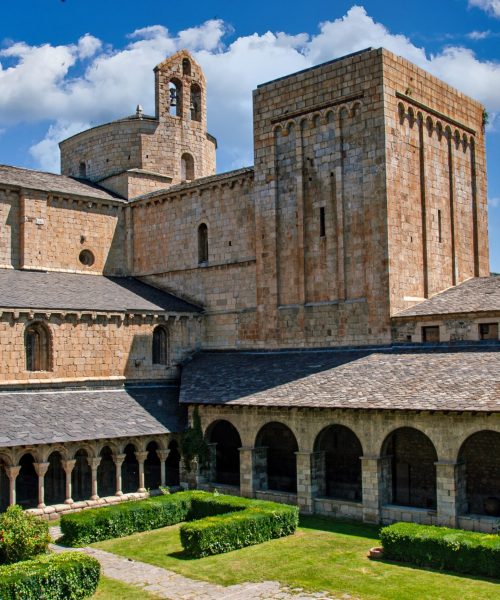
The chapel is a popular destination for those who enjoy hiking the Camino de San Miguel trail winding its way up the hillside. It is relatively easy, and it takes about 30 minutes to reach the chapel from the city center. Visitors along the way will pass through the beautiful Sacromonte neighborhood, famous for its cave dwellings and flamenco shows.
Click here for tours and activities.
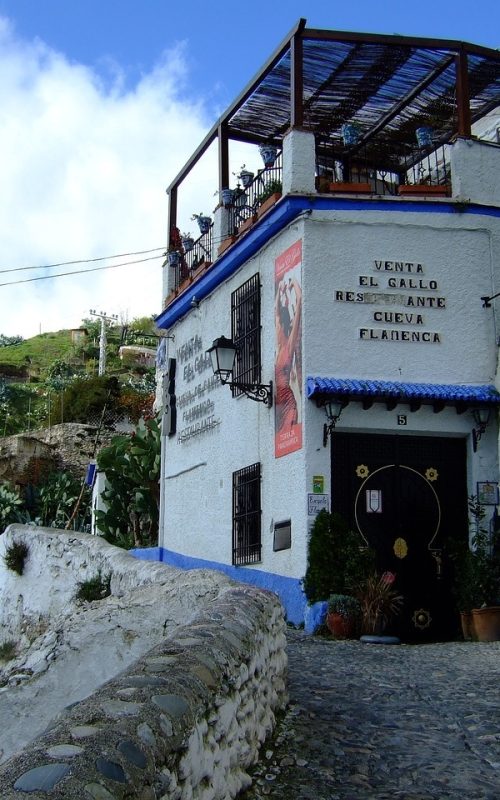
4. Sacromonte
A unique neighborhood is renowned for its cave dwellings, flamenco shows, and breathtaking views of the Alhambra Palace. This district is a testimony to Granada’s diverse and rich cultural heritage.
Sacromonte has a long history, and it is believed that the area was inhabited by the gypsies who settled in the region in the 15th century. These gypsies used the caves as their homes and became famous for their flamenco shows, which they performed in the caves.
The caves in Sacromonte are dug into the hillsides and offer a distinctive way of living for those who call them home. Some of these caves have been renovated and transformed into comfortable houses and apartments for tourists to rent. The cave houses are well-known for their unique architecture, which will provide a unique experience for visitors.
The neighborhood is also home to several museums, including the Cuevas del Sacromonte Museum, which offers a glimpse into the history and culture of the area. The museum displays various artifacts that depict the way of life of the gypsies and their contribution to the development of the flamenco art form.
You can enjoy the view of the Alhambra Palace from the Mirador San Nicolas where you can also listen to flamenco music. For tours and activities click here.
5. Sacromonte Abbey
Situated in the Sacromonte neighborhood. It is a historic monastery built in the 17th century dedicated to the city’s patron saints, Saint Cecilio and Saint Tesifón.
It sits on the hillside of the Valparaiso valley, overlooking the Alhambra Palace and the Darro River. The location is where Saint Cecilio, the first bishop of Granada, was believed to have been martyred in the 1st century.
The monastery’s architecture represents Gothic, Mudejar, and Renaissance styles. The interior is adorned with intricate stonework, frescoes, and altarpieces. The Chapel of the Santísimo Cristo de los Favores houses a 17th-century statue of Christ revered by the people of Granada.
The Sacromonte Abbey is also home to a museum that displays a collection of religious artifacts and artworks. The museum exhibits include sculptures, paintings, ceramics, and liturgical vestments, many date back to the 16th and 17th centuries.
The Abbey’s beautiful gardens offer a view of the Alhambra Palace.
In addition to its historical and architectural significance, the Sacromonte Abbey is also a pilgrimage site for many Catholics, who come to venerate the relics of Saint Cecilio and Saint Tesifón. For tours and activities click here.
DAY 3
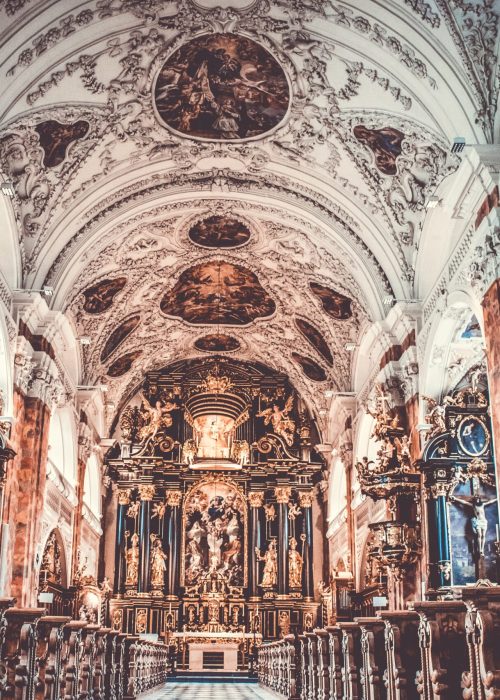
1. The Basilica of San Juan de Dios
A magnificent church was built in the 18th century in the city center. Dedicated to Granada’s patron saint Saint John of God. The church is part of the Hospitaller Order of Saint John of God, a Catholic order founded by Saint John of God himself in the 16th century.
The basilica is a beautiful example of Baroque architecture, with a stunning facade adorned with intricate sculptures and carvings. The interior is just as impressive, with vaulted ceilings, ornate altars, and stunning frescoes. The high altar has a beautiful gold-leafed altarpiece that depicts scenes from the life of Saint John of God.
It houses the tomb of Saint John of God, located in a chapel to the right of the high altar. It is adorned with beautiful marble sculptures.
It also houses a museum that presents the history of the Hospitaller Order of Saint John of God and contains artifacts, paintings, sculptures, vestments, and religious relics.
The basilica also houses a museum that showcases the history of the Hospitaller Order of Saint John of God. Click here for tours and activities.
2. The Monastery of Saint Jeronimo (Monasterio de San Jerónimo)
A stunning monastery complex was constructed during the height of the Spanish Renaissance in the early 16th century and was completed in 1516.
It was built by the Catholic Monarchs Ferdinand and Isabella as a final resting place for themselves and their descendants. The building was designed by Diego de Siloé, a great architect of the Spanish Renaissance. The monastery’s church features a mix of Gothic and Renaissance architectural elements, including a beautiful dome with intricate stonework and a stunning altarpiece.
Inside the monastery, visitors can admire the beautiful cloister, surrounded by columns adorned with ornate carvings. It features a small garden with a fountain, providing a tranquil space for reflection and contemplation.
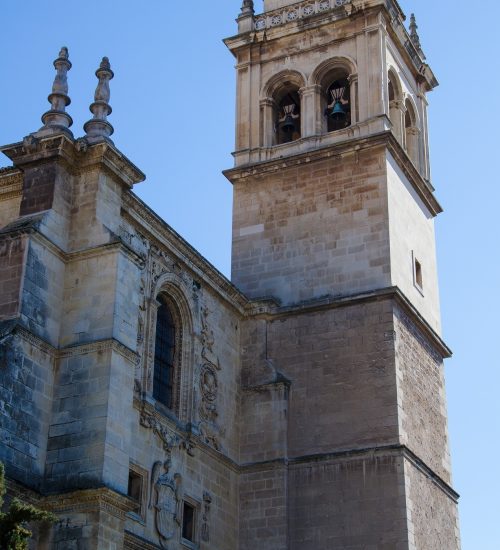
The sacristy is decorated with detailed carvings and features an altarpiece by Alonso Cano, an artist in the Spanish Baroque period.
The monastery also has an impressive library, which house over 25,000 volumes, including rare manuscripts and incunabula. The library is housed in a beautiful room with a vaulted ceiling open to scholars and researchers.
Today, the Monastery of Saint Jeronimo is still an active religious community, with a small group of monks living on site. The monastery is open to the public, and visitors can explore the beautiful architecture and art inside. Click here for guided tours.
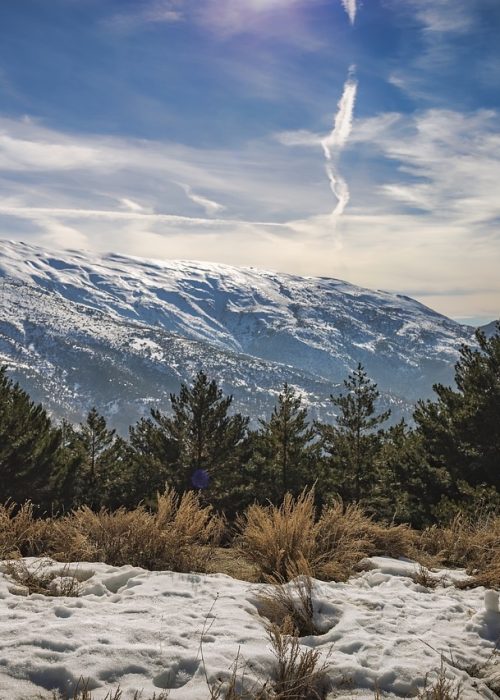
3. The Sierra Nevada National Park
One of the most popular national parks in Spain. With an area of over 85,883 hectares, the park is in the Sierra Nevada mountain range, known for its breathtaking natural beauty and diverse flora and fauna.
The park is home to some of the highest peaks in Spain, including the Mulhacén, the highest mountain in the Iberian Peninsula. The park’s landscape is characterized by rugged tops, deep valleys, glistening lakes, and vast forests. Visitors can enjoy hiking, skiing, and mountain biking in the park.
One of the popular areas of the park is the Alpujarras, a picturesque region located on the southern slopes of the Sierra Nevada. The Alpujarras is known for its white-washed villages, traditional farming methods, and stunning landscapes. Visitors can take guided tours or explore the region on their own.
During the winter months, the Sierra Nevada National Park is a popular destination for skiing and snowboarding. The park’s ski resort, the Soly Nieve, is a popular ski destination in Spain. The resort offers a range of ski runs for all skill levels, restaurants, bars, and other amenities. Click here for tours.
Disclosure: Please note that some links on this website are affliate links. At no cost to you, I receive commission if you make a purchase. I only recommend companies that I research and would use.


